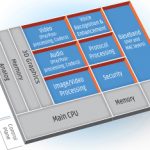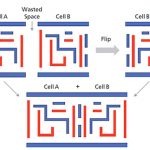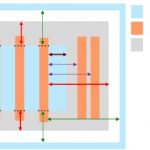Today Cadence announced Tempus, their new timing signoff solution. This has been in development for at least a couple of years and has been built from the ground up to be massively parallelized. Not just that different corners can be run in parallel (which is basically straightforward) but that large designs can be partitioned … Read More
Cadence Technical Sessions @ #50DAC (Free Food!)
Cadence is a DAC anchor, everyone will visit their booth, so lets look at their technical sessions and put our agendas together. Lets start with the breakfast/lunch sessions because Cadence usually puts out quite a spread, we all gotta eat and free food tastes even better:
Has “Timing Signoff Innovation” Become an Oxymoron? What… Read More
Design IP round #2: after road-test, time for the race
Design IP, at least Interface IP, is about 15 years old, but the market was made of one large provider – Synopsys- with many small vendors around. Chip makers were not very comfortable with this picture, especially the Tier 1 considering that the risk (to see the big one being acquired by one of their direct competitor, say Samsung… Read More
How To Design a TSMC 20nm Chip with Cadence Tools
Every process node these days has a new “gotcha” that designers need to be aware of. In some ways this has always been the case but the changes used to be gradual. But now each process node has something discontinuously different. At 20nm the big change is double patterning. At 14/16nm it is FinFET.
Rahul Deokar and John… Read More
Multi-level abstraction accelerates verification turnaround
Often a question is raised about how SystemC improves verification time when the design has to go through RTL in any case. A simple answer is that with SystemC, designs can be described at a higher level of abstraction and then automatically synthesized to RTL. When the hands-on design and verification activity is at a higher level,… Read More
Cadence ♥ TSMC
TSMC has been investing in the fabless semiconductor ecosystem for 25+ years and that is why they are the #1 foundry and lead this industry (my opinion). I’m a big fan of joint webinars. Not only is it collaboration open to the masses, it is a close collaboration between the two sponsoring companies. Having worked on the TSMC… Read More
Variation-aware IC Design
We’ve blogged before about Layout Dependent Effects (LDE) on SemiWiki and how it further complicates the IC design and layout process, especially at 28nm and lower nodes because the IC layout starts to change the MOS device performance. There’s an interesting webinarfrom Cadence on Variation-aware IC Design, … Read More
Two New TSMC-Cadence Webinars for Advanced Node Design
Foundries and EDA vendors are cooperating at increasing levels of technical intimacy as we head to the 20nm and lower nodes. Cadence has a strong position in the EDA tools used for IC design and layout of custom and AMS (Analog Mixed-Signal) designs. They have created a series of webinars to highlight the design challenges and new… Read More
Cadence Sues Berkeley Design Automation
Cadence has brought a suit against Berkeley Design Automation for, as far as I can see, integrating their AFS circuit simulator with the Virtuoso Analog Design Environment (ADE) without using the (licensed) Oasis product. Since BDA is (actually was) a member of the Cadence Connections program, they have to abide by the contract… Read More
Manage your IC’s Stress for right performance
As we have moved towards lower process nodes to improve performance of ICs with higher density and functionality, many manufacturing effects have appeared which can render ICs useless, even though the layout design could be correct as per traditional design rules. What is more worrisome is the variability of these effects which… Read More










